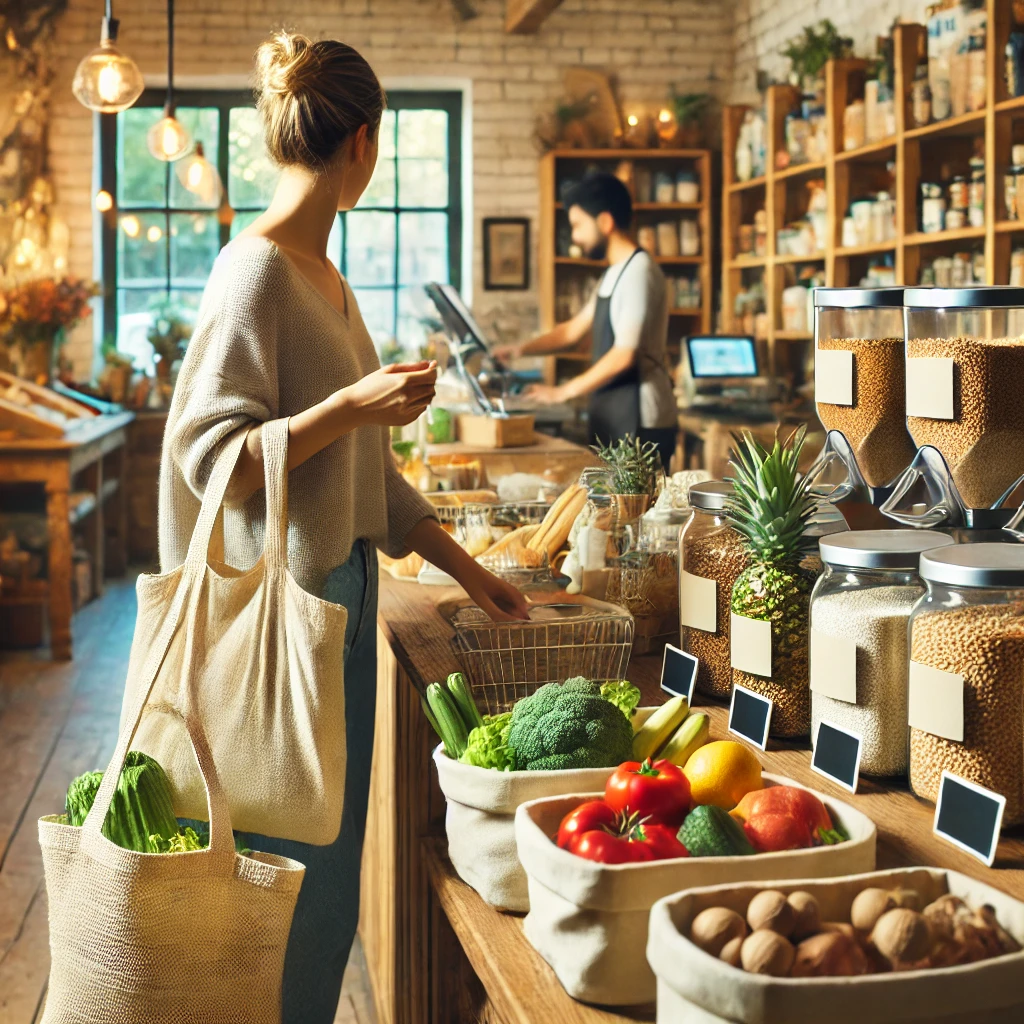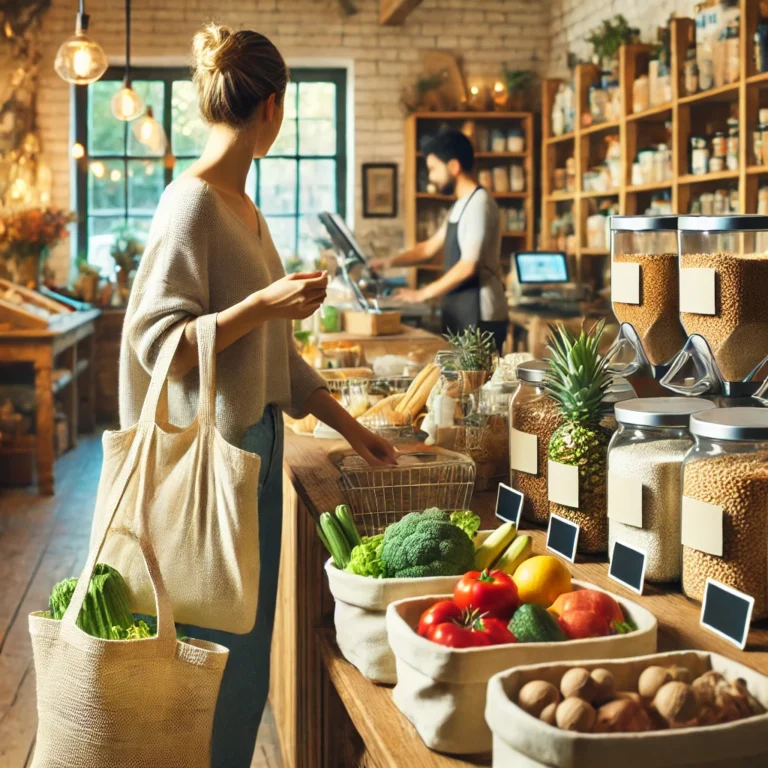Physical Address
304 North Cardinal St.
Dorchester Center, MA 02124
Physical Address
304 North Cardinal St.
Dorchester Center, MA 02124


Have you ever thought about how much waste we generate while shopping for groceries? From plastic bags to packaged goods, it all adds up quickly. Zero-waste grocery shopping might sound like a challenge, but with a few practical tips, you can reduce plastic waste, save money, and make a positive impact on the planet. Let’s dive into simple, effective steps for sustainable shopping that work wherever you are in the world!
3. Real-Life Example
4. Conclusion: Start Your Zero-Waste Shopping Journey Today
Zero-waste grocery shopping is about minimizing waste, especially single-use plastics, and making more mindful choices. According to the Plastic Pollution Coalition, over 300 million tons of plastic are produced every year, much of which is used for packaging. By adopting zero-waste practices, we can contribute to a healthier environment and inspire others to do the same.
Reducing plastic waste in grocery shopping also helps us buy only what we need, making it easier to avoid food waste and stick to a budget.
Here’s a guide to making your grocery shopping trips more sustainable, no matter where you’re shopping.
One of the most effective ways to reduce waste is by planning meals in advance. By making a list of what you need, you avoid impulse buys and buy only what you’ll use. This helps minimize food waste and ensures that every item you buy has a purpose. It’s a small step, but it adds up over time.
A family in Canada started meal planning and saw a 20% reduction in their grocery expenses, with less food ending up in the trash.
Bringing reusable bags and containers is key to reducing plastic waste. Canvas bags, glass jars, and stainless steel containers are great for carrying everything from dry goods to fresh produce. These items are durable, washable, and prevent the need for plastic bags and packaging.
In Germany, many stores allow customers to bring their own containers for bulk items. A shopper shared how switching to reusable bags and jars cut down on single-use plastics, making each shopping trip feel more purposeful.
Learn more about reducing single-use plastics on Earth Day’s official site for tips and resources.
Buying in bulk is an excellent way to reduce packaging waste, especially for pantry staples like rice, beans, pasta, and nuts. Many zero-waste and health food stores offer bulk sections where you can bring your own containers and purchase just the amount you need. Buying in bulk often ends up being more cost-effective and reduces the need for frequent trips to the store.
A family in the United States found that by buying in bulk, they saved around $30 each month and avoided unnecessary packaging, turning shopping into a more sustainable practice.
Choosing loose, unpackaged produce is a simple way to cut down on plastic waste. Whenever possible, avoid pre-packaged items, and look for produce that is free from plastic wrap. Not only is fresh produce healthier, but it also often supports local farms.
In the UK, a woman started buying her produce from a local market rather than the grocery store. She found that the produce was fresher, lasted longer, and didn’t come wrapped in plastic, making her shopping routine much more eco-friendly.
Shopping at farmers’ markets and eco-friendly stores is a great way to support local businesses that prioritize sustainable practices. Farmers’ markets usually sell fresh, seasonal produce without unnecessary packaging. Many of these markets encourage shoppers to bring their own bags, and you can often find items like bread, honey, and dairy products in reusable containers.
A couple in Australia switched to buying their groceries from local markets and small eco-conscious shops, enjoying fresher food, supporting local producers, and reducing their environmental impact.
Discover your local farmers’ market with the Farmers Market Coalition’s resources to find sustainable options near you.
Sara, an environmental enthusiast from Brazil, started her zero-waste grocery shopping journey by making a few small changes. She switched to reusable bags, shopped at local markets, and started buying in bulk. Within a few months, she noticed a decrease in both plastic waste and her grocery bills. Her experience inspired her family to try zero-waste shopping, and together, they made a positive impact on their community by setting an example for others.
Are you ready to try zero-waste grocery shopping? Reducing waste doesn’t have to be overwhelming. By taking small steps like planning meals, bringing reusable bags, and choosing fresh produce, you can make a meaningful difference in your lifestyle and the environment.
What are your favorite zero-waste shopping tips? Share them with us, and let’s keep inspiring each other to make sustainable choices every day!